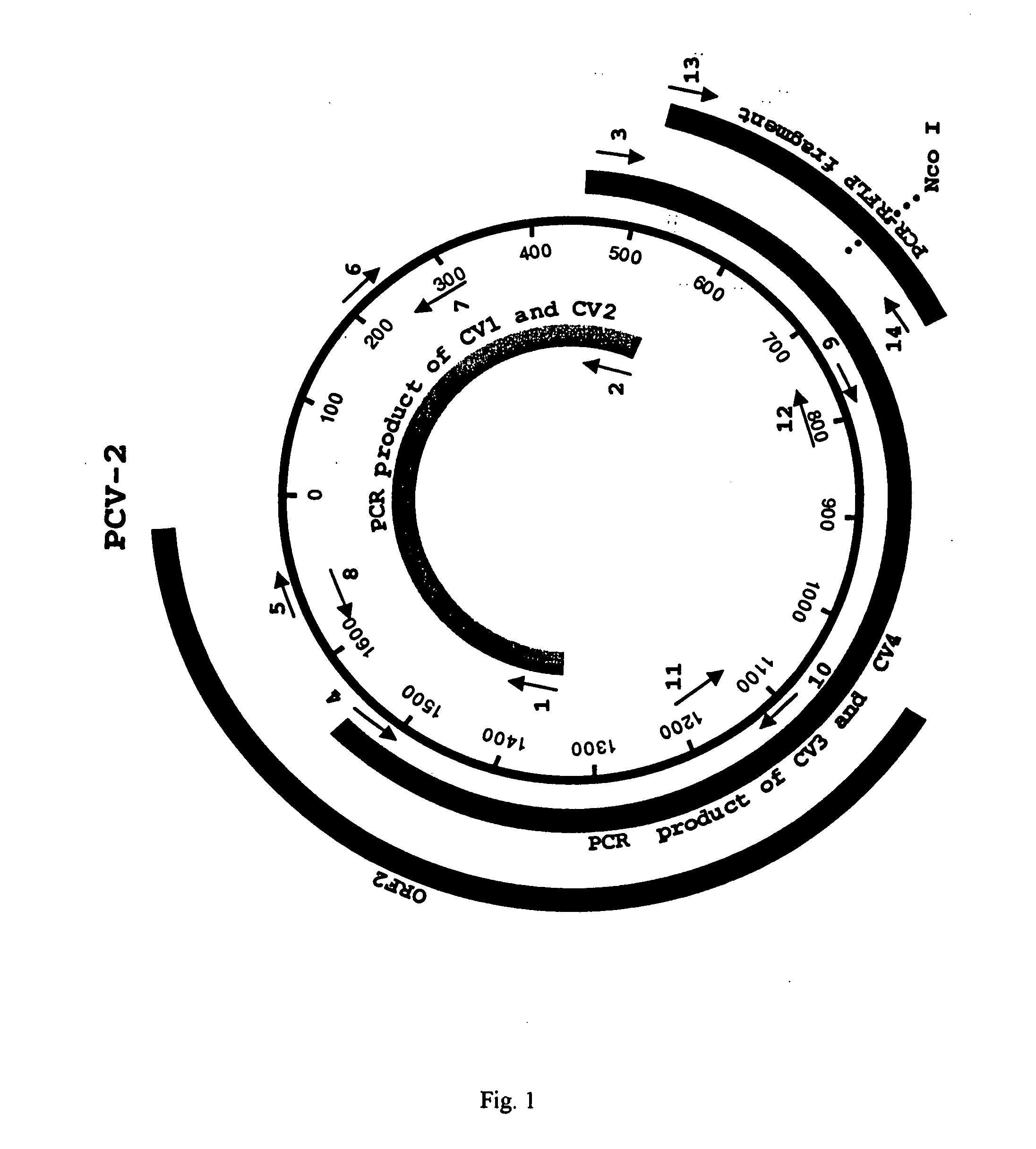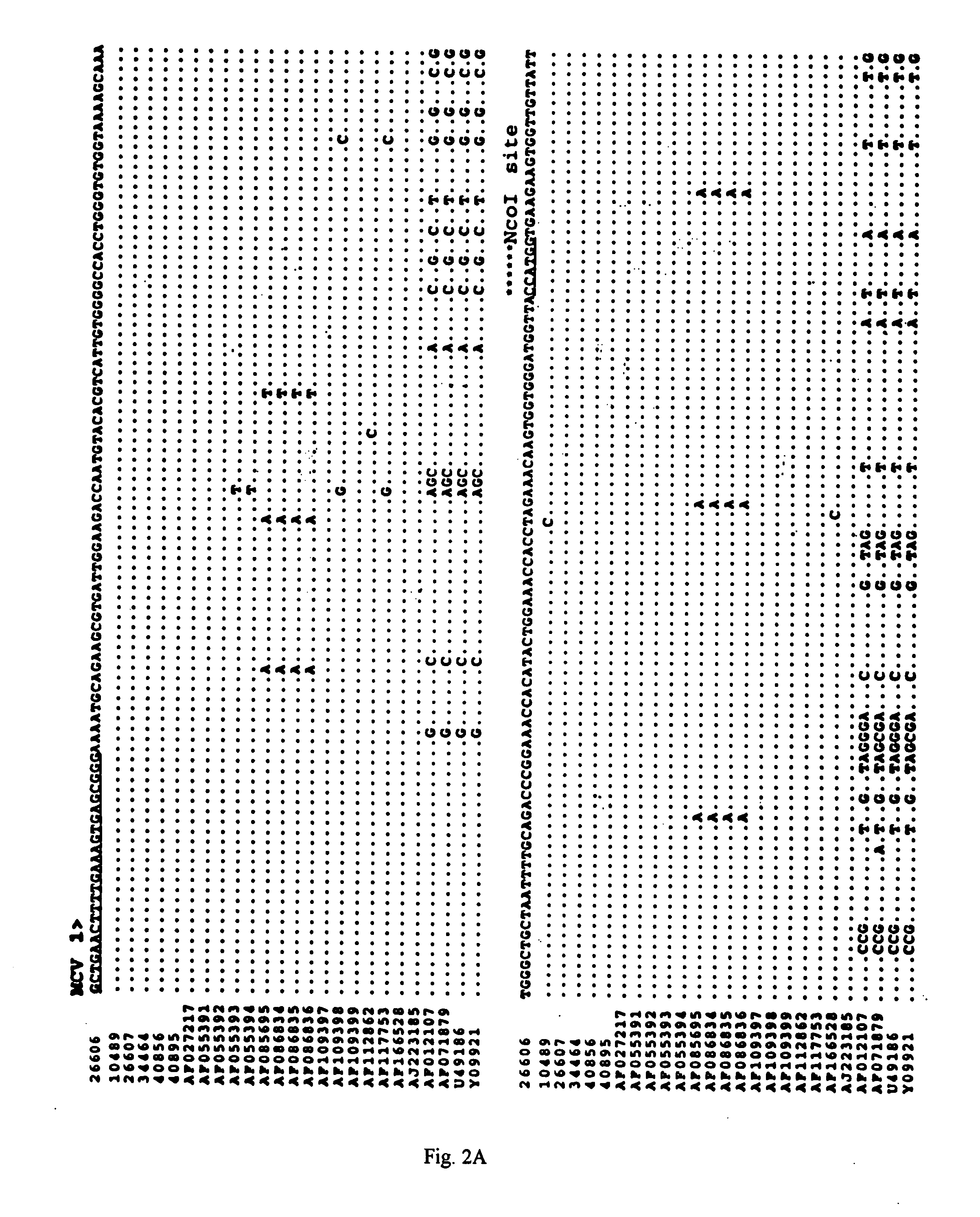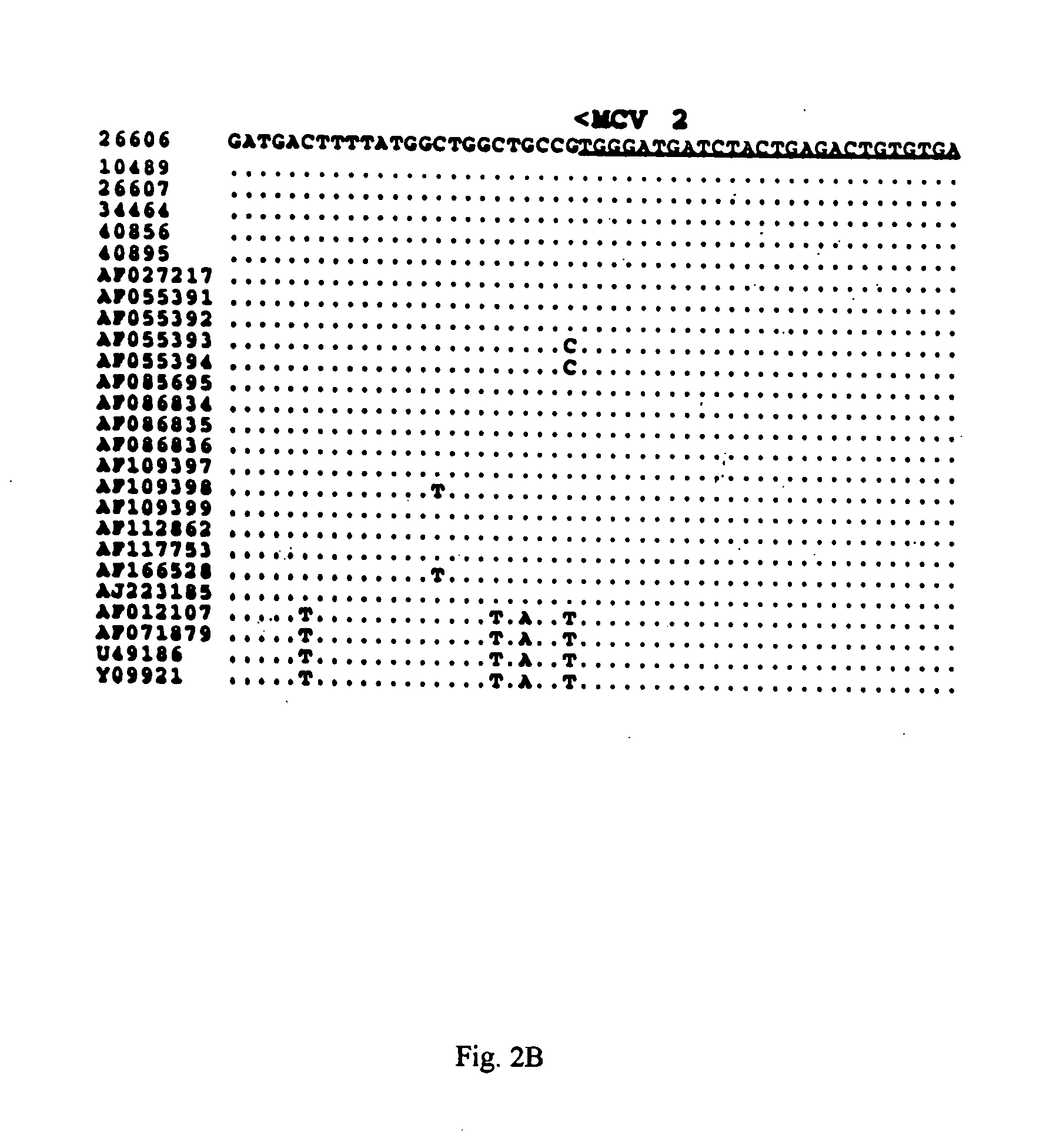Differential PCR-RFLP assay for detecting and distinguishing between nonpathogenic PCV-1 and pathogenic PCV-2
a technology of pcv-2 and rflp, which is applied in the field of detecting and distinguishing porcine circovirus (pcv) infections, can solve the problems of complex study, inability of these tests to detect pcv-2 isolates from different geographic regions, and questionable prior methods' usefulness
- Summary
- Abstract
- Description
- Claims
- Application Information
AI Technical Summary
Problems solved by technology
Method used
Image
Examples
example 1
Isolation of DNA from Tissue Samples
[0042] Various tissue samples (liver, spleen, tonsil, lymph nodes, etc.) were collected from pigs with PMWS as confirmed by immunohistochemistry (IHC). The tissues were stored until use at −80 C. The complete PCV-2 genome was amplified, sequenced and characterized from tissue samples of six selected PMWS cases originated from different geographic regions of North America: two cases from Utah, one from Missouri, one from Iowa, one from Illinois, and one from Canada (Table 1, below). These six PMWS cases, along with four more field cases of PMWS (Table 1, below) from Iowa, were also characterized by the PCR-RFLP analyses.
[0043] DNA was extracted from the various tissue samples with a QIAamp DNA Mini kit (Qiagen, Inc., Valencia, Calif.) according to the protocol supplied by the manufacturer. For each DNA extraction, 25 mg of tissue samples were used. The resulting DNA was eluted in DNase, RNase and proteinase-free water (Eppendorf 5 Primer, Inc., B...
example 2
PCR Amplification of the Complete Genome of PCV-2
[0044] Two sets of PCR primers were designed on the basis of the published PCV-2 sequence. These primers amplify two overlapping fragments that represent the entire genome of PCV-2 (FIG. 1). The first set of primers, CV1 and CV2 (Table 2, below), amplifies a 989 bp fragment, and the second set of primers, CV3 and CV4 (Table 2, below), amplifies a 1092 bp fragment. The extracted DNA was amplified by PCR using AmpliTaq Gold polymerase (Perkin Elmer, Norwalk, Conn.). The PCR reaction consisted of 35 cycles of denaturation at 94 C for 1 min, annealing at 55 C for 1 min, and extension at 72 C for 3 min, followed by a terminal extension at 72 C for 7 min.
example 3
Nucleotide Sequencing, Sequence and Phylogenetic Analyses
[0045] The PCR products of expected sizes were purified by electrophoresis on a 1% agarose gel followed by extraction with a Geneclean Kit (Bio101, La Jolla, Calif.). Both strands were sequenced with a variety of sequencing primers (Table 2, below) with an ABI automated DNA Sequencer at Virginia Tech's DNA Sequencing Facility. The sequences of the primers used to sequence the complete genome of PCV-2 are listed in Table 2, below and their relative positions in the circular genome are indicated (FIG. 1). The sequences were compiled and analyzed by the MacVector program (commercially available from Oxford Molecular Ltd., Beaverton, Oreg.). The percentages of sequence identity among different PCV isolates were determined with the Clustal alignment program in the MacVector package. Sequence alignments were performed with the ALIGN program in the MacVector package. Phylogenetic analyses were conducted with the aid of the PAUP prog...
PUM
| Property | Measurement | Unit |
|---|---|---|
| Length | aaaaa | aaaaa |
Abstract
Description
Claims
Application Information
 Login to View More
Login to View More - R&D
- Intellectual Property
- Life Sciences
- Materials
- Tech Scout
- Unparalleled Data Quality
- Higher Quality Content
- 60% Fewer Hallucinations
Browse by: Latest US Patents, China's latest patents, Technical Efficacy Thesaurus, Application Domain, Technology Topic, Popular Technical Reports.
© 2025 PatSnap. All rights reserved.Legal|Privacy policy|Modern Slavery Act Transparency Statement|Sitemap|About US| Contact US: help@patsnap.com



